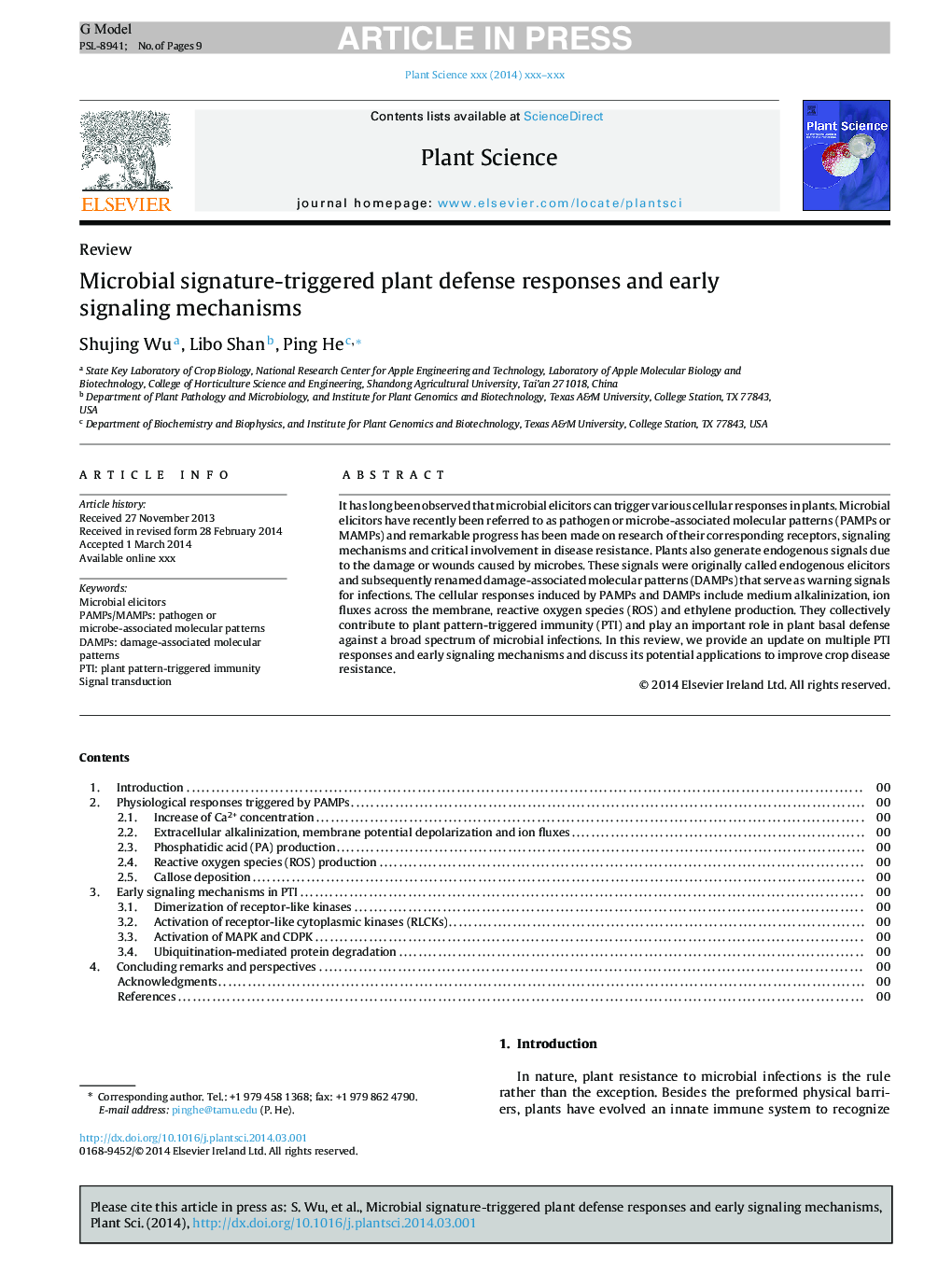| Article ID | Journal | Published Year | Pages | File Type |
|---|---|---|---|---|
| 8358132 | Plant Science | 2014 | 9 Pages |
Abstract
It has long been observed that microbial elicitors can trigger various cellular responses in plants. Microbial elicitors have recently been referred to as pathogen or microbe-associated molecular patterns (PAMPs or MAMPs) and remarkable progress has been made on research of their corresponding receptors, signaling mechanisms and critical involvement in disease resistance. Plants also generate endogenous signals due to the damage or wounds caused by microbes. These signals were originally called endogenous elicitors and subsequently renamed damage-associated molecular patterns (DAMPs) that serve as warning signals for infections. The cellular responses induced by PAMPs and DAMPs include medium alkalinization, ion fluxes across the membrane, reactive oxygen species (ROS) and ethylene production. They collectively contribute to plant pattern-triggered immunity (PTI) and play an important role in plant basal defense against a broad spectrum of microbial infections. In this review, we provide an update on multiple PTI responses and early signaling mechanisms and discuss its potential applications to improve crop disease resistance.
Keywords
Related Topics
Life Sciences
Agricultural and Biological Sciences
Plant Science
Authors
Shujing Wu, Libo Shan, Ping He,
